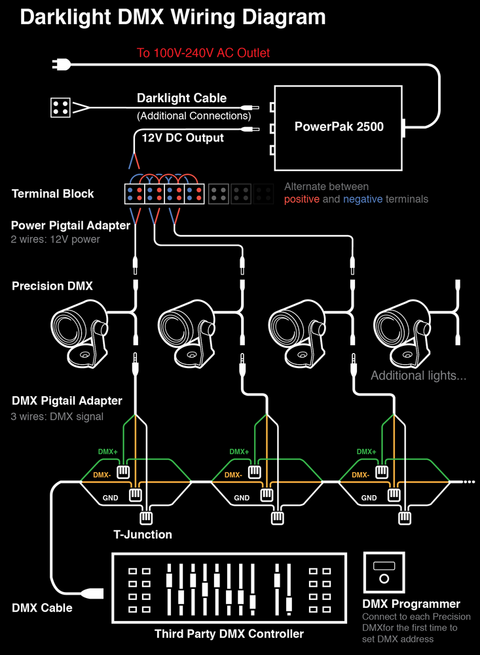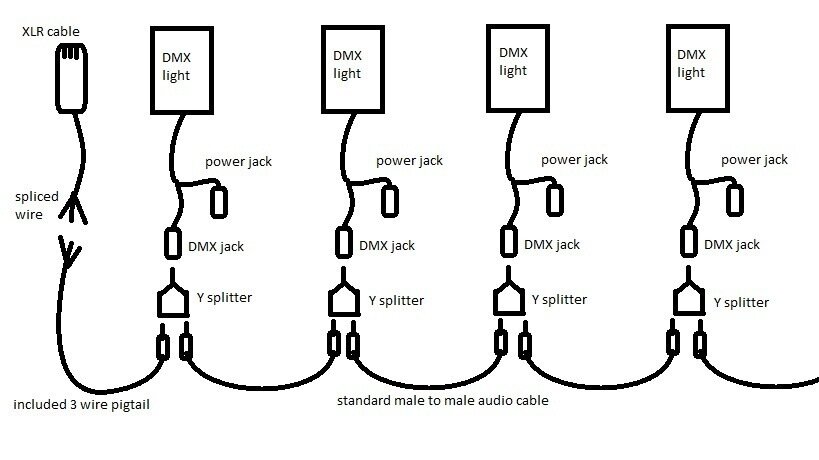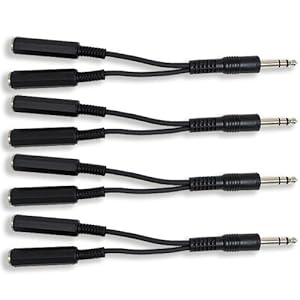beardedbil
Member
To all members,
I am working on a haunted attraction project for a client and he desperatly wants to use these Precision DMX lights which are marketed as the worlds smallest RGB DMX light:
Precision DMX: RGB Theatrical Light
My question and potential problem is the way the light is manufactured. It shows only one DMX input on a 3.5mm TRS jack. When I spoke to the vendor he suggested using a headphone splitter to direct the DMX signal onto the next light for ease of wiring. Then we could use simple 1/8" headphone extensions to go from light to light.
The website does show a setup diagram (seen below) using bare wires but he shows the signal T-ing at every light. It is my understanding that the DMX protocol does not allow this type of wiring. Am I completely wrong? I would think the headphone splitter would not work as well either.

When speaking to the vendor about this he said he did a lab test using headphone extensions as wire and it worked perfectly for the 5 lights he setup. We will be using over 75 lights between 2 universes of DMX which makes me worry. We will also be using a DMX splitter from Blizzard lighting to hopefully cut down on any errors and length of DMX legs . I am writing today to get the members feelings and thoughts on this light... Hope everyone is having a great day!
Best,
Bill Rod.
I am working on a haunted attraction project for a client and he desperatly wants to use these Precision DMX lights which are marketed as the worlds smallest RGB DMX light:
Precision DMX: RGB Theatrical Light
My question and potential problem is the way the light is manufactured. It shows only one DMX input on a 3.5mm TRS jack. When I spoke to the vendor he suggested using a headphone splitter to direct the DMX signal onto the next light for ease of wiring. Then we could use simple 1/8" headphone extensions to go from light to light.
The website does show a setup diagram (seen below) using bare wires but he shows the signal T-ing at every light. It is my understanding that the DMX protocol does not allow this type of wiring. Am I completely wrong? I would think the headphone splitter would not work as well either.

When speaking to the vendor about this he said he did a lab test using headphone extensions as wire and it worked perfectly for the 5 lights he setup. We will be using over 75 lights between 2 universes of DMX which makes me worry. We will also be using a DMX splitter from Blizzard lighting to hopefully cut down on any errors and length of DMX legs . I am writing today to get the members feelings and thoughts on this light... Hope everyone is having a great day!
Best,
Bill Rod.
Last edited by a moderator:




